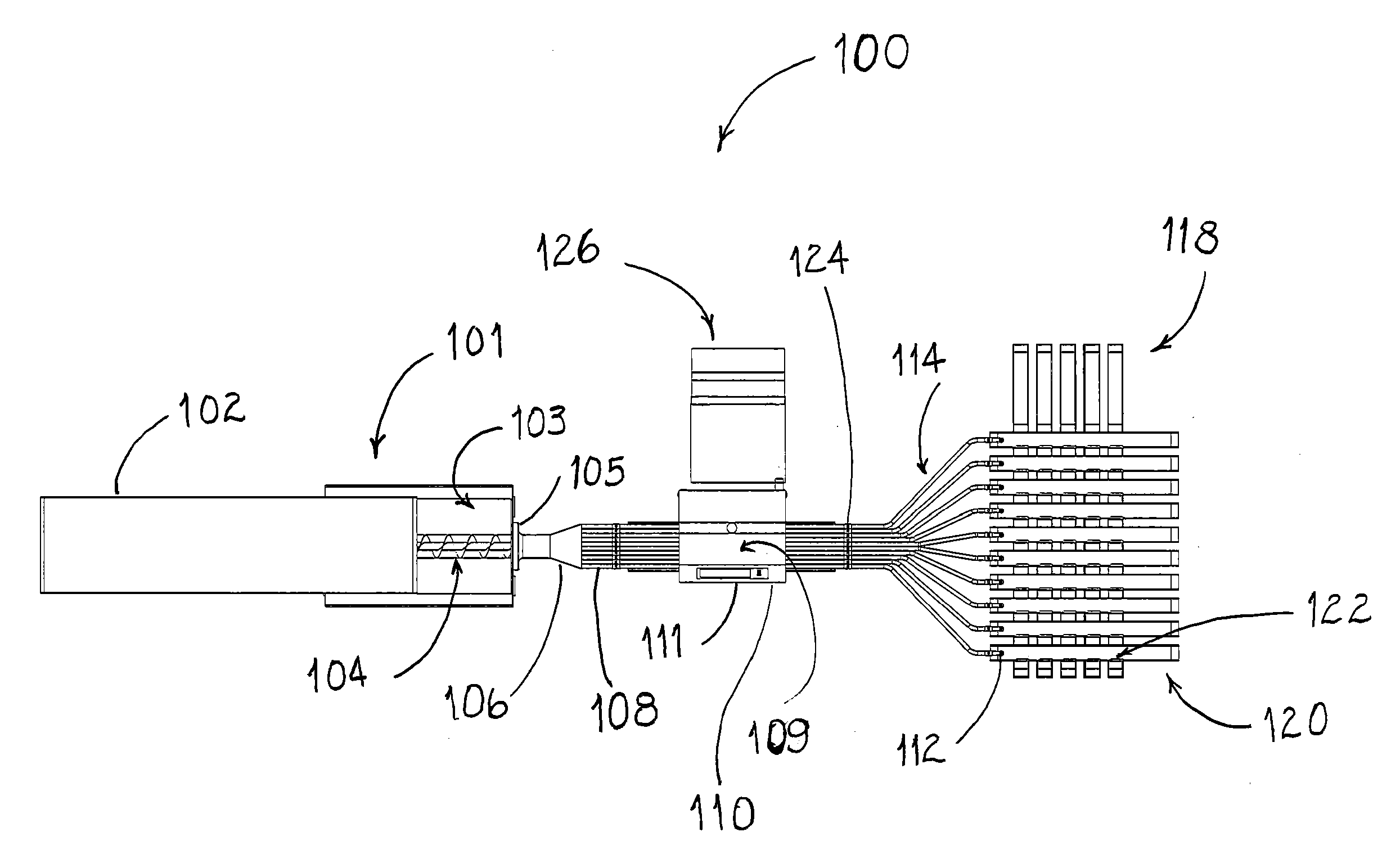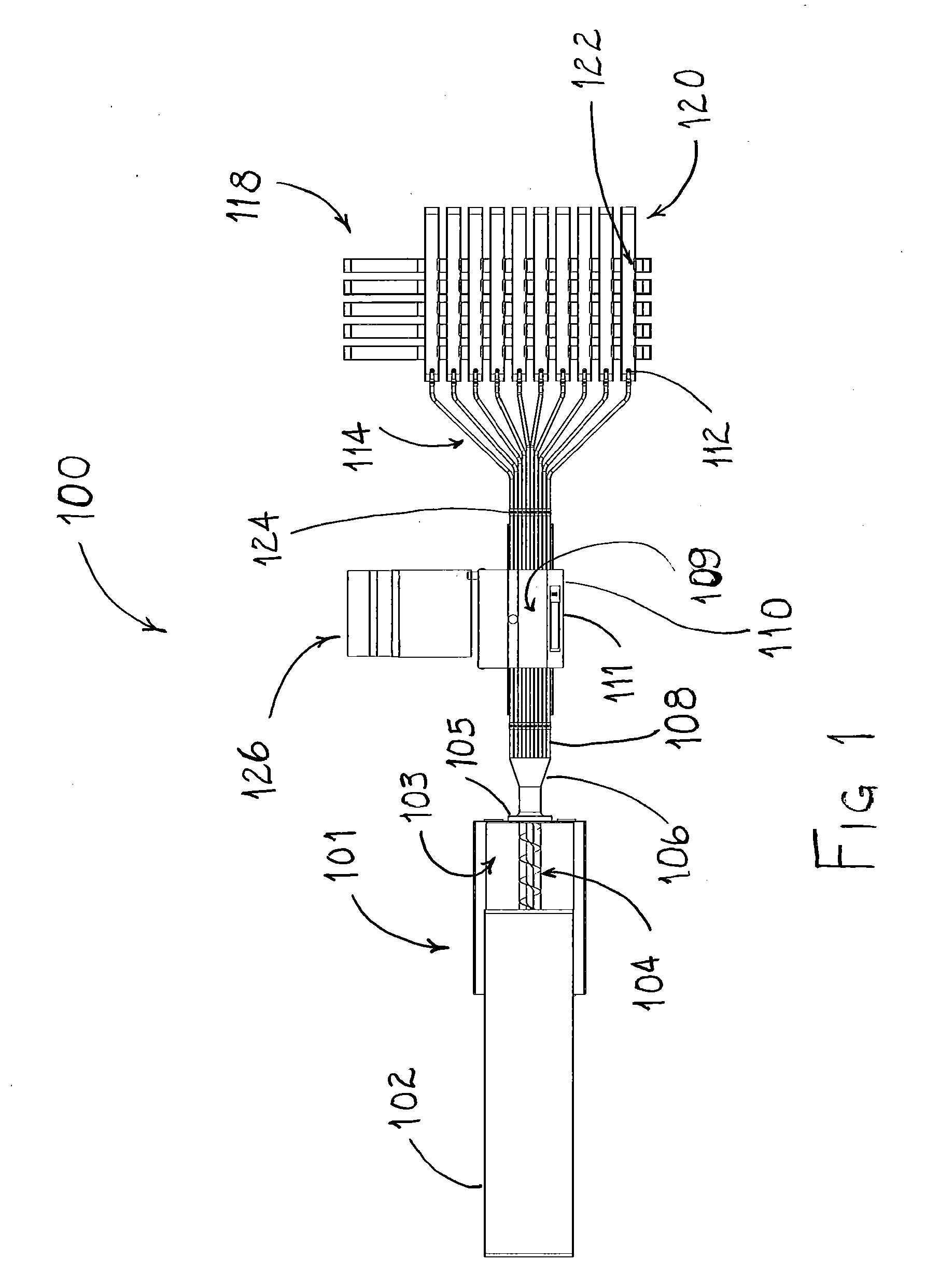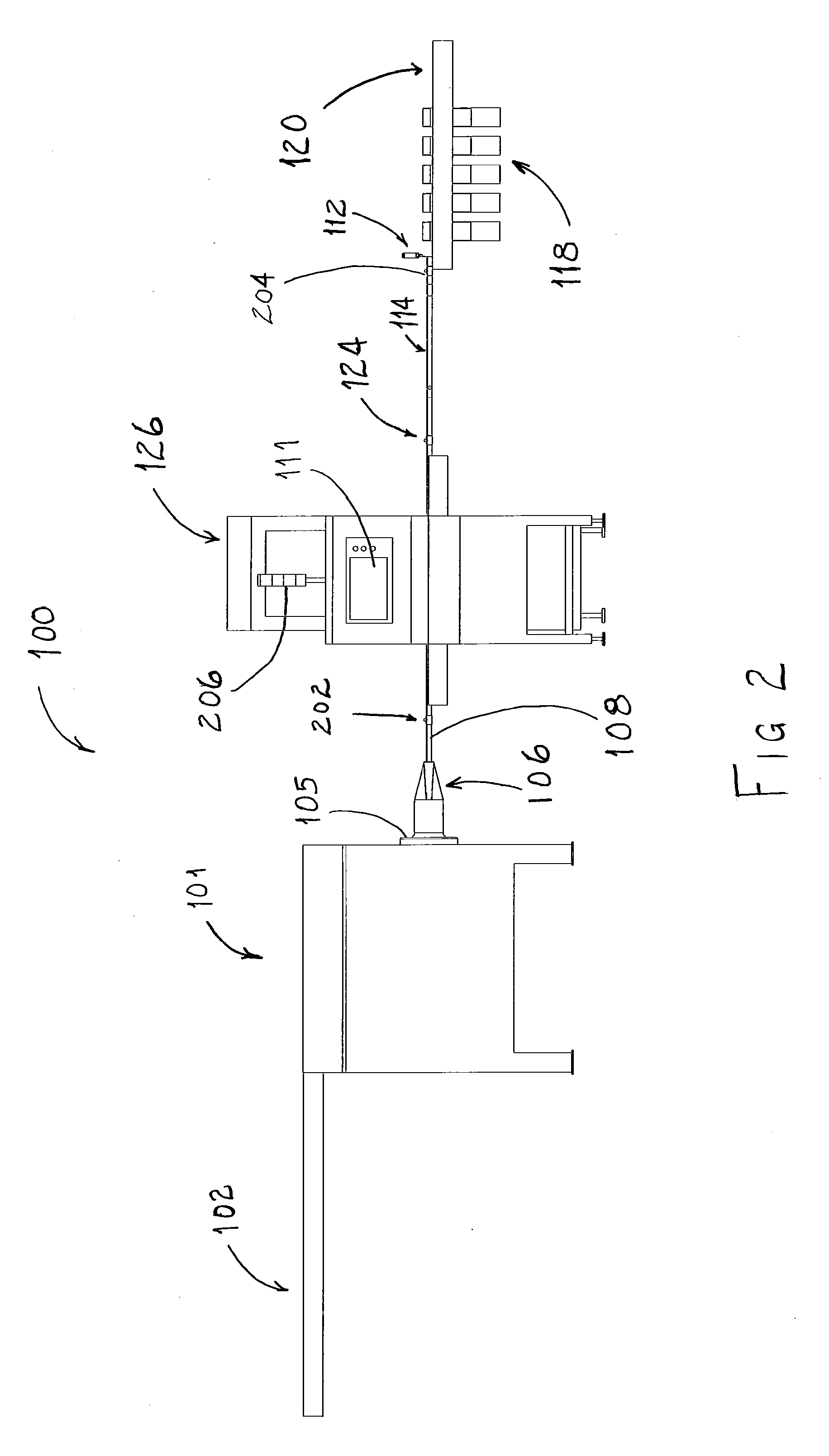System and method for lean recovery using non invasive sensors
a sensor and sensor technology, applied in the field of lean recovery, can solve the problems of reducing the fat content of the remaining more lean portions, reducing the lean portion size, so as to achieve accurate recovery and reduce size
- Summary
- Abstract
- Description
- Claims
- Application Information
AI Technical Summary
Benefits of technology
Problems solved by technology
Method used
Image
Examples
Embodiment Construction
[0039]According to the embodiment(s) of the present invention, various views are illustrated in FIGS. 1-8 and like reference numerals are being used consistently throughout to refer to like and corresponding parts of the invention for all of the various views and figures of the drawing. Also, please note that the first digit(s) of the reference number for a given item or part of the invention should correspond to the Figure number in which the item or part is first identified.
[0040]One embodiment of the present invention comprising a grinder, conveyor, and cutter teaches a novel apparatus and method for segregating sparse lean product based on percent fat content. Sparse lean product or trim can be accumulated trim in an auger / grinder. The grinder can be equipped with rotating knife or cutting plate to pre-size the product. The auger / grinder's end plate can be adapted with an adapter to output the ground product horizontally. A conveyance system can be communicably connected to the ...
PUM
| Property | Measurement | Unit |
|---|---|---|
| length | aaaaa | aaaaa |
| temperature | aaaaa | aaaaa |
| length | aaaaa | aaaaa |
Abstract
Description
Claims
Application Information
 Login to View More
Login to View More - R&D Engineer
- R&D Manager
- IP Professional
- Industry Leading Data Capabilities
- Powerful AI technology
- Patent DNA Extraction
Browse by: Latest US Patents, China's latest patents, Technical Efficacy Thesaurus, Application Domain, Technology Topic, Popular Technical Reports.
© 2024 PatSnap. All rights reserved.Legal|Privacy policy|Modern Slavery Act Transparency Statement|Sitemap|About US| Contact US: help@patsnap.com










